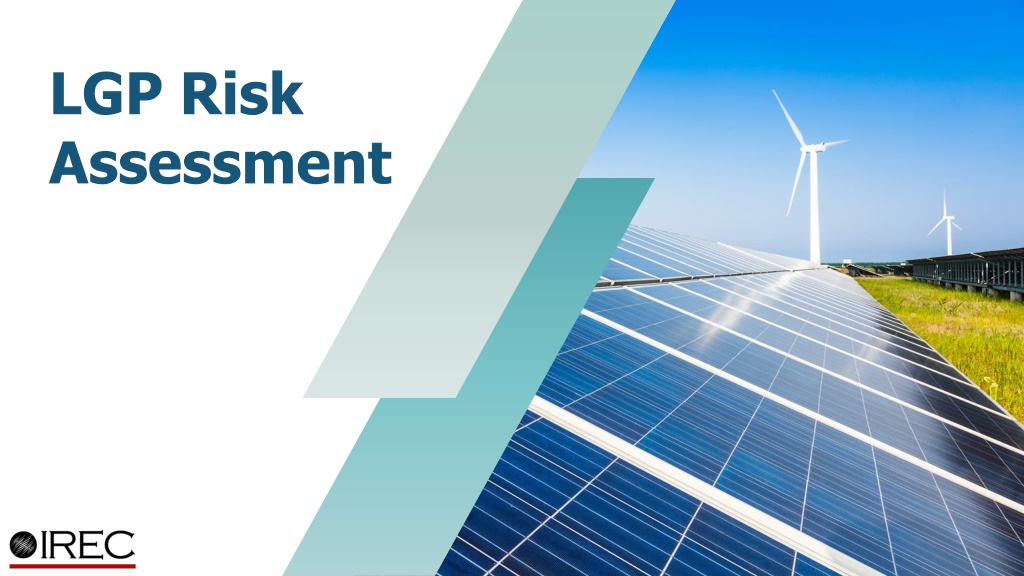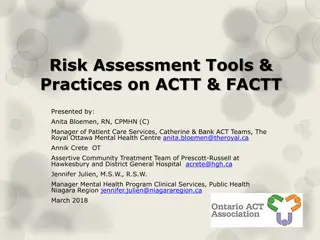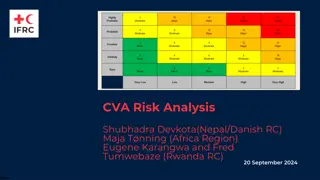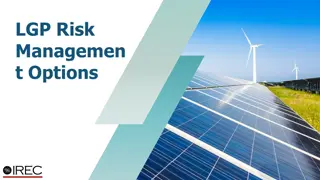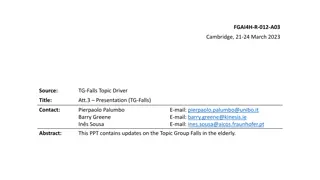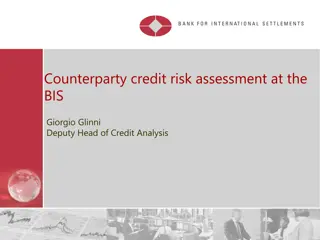Analysis of LGP Risk Assessment and Policy Implications
The LGP Risk Assessment presentation discusses the uncertainties surrounding load reductions and associated costs for upgrades and curtailments. It questions the justification for holding interconnection customers financially responsible for grid changes post-operation and advocates for a policy that promotes better utilization of existing grid assets. The subsequent slides aim to stimulate discussions informing proposal development, emphasizing the importance of analyzing historical data and potential financial costs in implementing the LGP to set a cap on costs borne by the rate base. Additionally, the analysis explores the likelihood of limited generation profiles versus traditional interconnections leading to upgrade costs, highlighting the necessity of allowing LGP in a financeable manner. The mechanics of the analysis involve examining historical data on load reductions to inform decision-making processes.
Download Presentation

Please find below an Image/Link to download the presentation.
The content on the website is provided AS IS for your information and personal use only. It may not be sold, licensed, or shared on other websites without obtaining consent from the author. Download presentation by click this link. If you encounter any issues during the download, it is possible that the publisher has removed the file from their server.
E N D
Presentation Transcript
LGP Risk Assessment
2 The Unknown We do not yet know how likely it is that load reductions will occur We do not have a sense of the magnitude of costs associated with upgrades and/or curtailments if those load reductions do occur
3 Fundamental Policy Change is not Justified Currently, interconnection customers are not financially responsible for changes to the grid (via load, reconfigurations, or other circumstances) that occur after they have commenced operation. Holding customers responsible (via either curtailments or upgrade costs) changes that policy. These events are outside of the interconnection customer s control Doing so seems likely to prevent better utilization of existing grid assets Raises the costs of providing energy during peak periods of demand (during the day, or throughout the year)
The following slides are intended to solicit discussion that can inform proposal development and do not represent the final IREC proposal or that of our collaborators.
5 Analysis for Discussion The following analysis and data collection discussion topics were developed in collaboration with Cal Advocates Conduct an analysis, using historical data and application of existing tools to analyze: Potential frequency with which we can anticipate load reductions will occur in the future The potential costs of upgrades that could be anticipated should the load reduction arise Put together: An understanding of the potential financial costs of implementing the LGP Use this analysis to develop a cap on costs that could be born by the rate base as LGP is rolled out Rollout the LGP, while maintaining existing cost responsibility principles, but revisit policy if/when cap is reached.
6 Analysis for Discussion In addition to analyzing how often load reductions are likely to occur and the potential costs, examine how likely it is that limited generation profiles vs. traditional interconnections will result in post-interconnection upgrade costs Characterize the upgrade costs that would be incurred if LGP is not allowed in a financeable manner and upgrades thus need to be made in order to build capacity to serve peak load periods.
7 Mechanics of Analysis Historical data on load reductions above 100 kW that have occurred on feeders for the last 5 years Back out the NEM below 1 MW load reductions? Layer on expected load growth? Each IOU selects a stratified sample of 30 cases from above and estimates upgrade cost, if any, that would have arisen if the largest-allowable interconnection occurred (a) with LGP and (b) with a traditional interconnection Also calculate the net-present value of any curtailment of the projects over a 25-year life span Each IOU calculates the sum of [events*(cost/event)] to achieve an approximate annual upper bound on total upgrade costs in each of the four cases (LGP or non-LGP and upgrade or curtail). Each IOU divides the results from above by the number of circuits in their territory to estimate the likely average after-the-fact cost associated with each project.
8 Data Needs 1. 5 years of records of load reductions > 100 kW a) 5 years of interconnection records for NEM projects from 100 kW to 1 MW. b) Load growth forecast for the selected feeders 2. ICA data these data do not need to cover all historic cases, the study could: a) Use recent examples in the stratified sample; or, b) Use recent ICA data with past cases. 3. Upgrade costs for each event. 4. Value of exports to customers (i.e., value of curtailments). 5. Number of circuits in territory.
9 Ongoing Data Tracking After Implementation Implementation data tracking 1. Interconnection data for all LGP customers. 2. For any circuit with an LGP customer: a) All triggered after-the-fact upgrades and resulting cost. b) What was the triggering event. 3. Upgrades triggered on feeders with non-LGP customers due to load loss and resulting cost. a) What was the triggering event. 4. Track the number of feeders with LGP customers and the number with non-LGP customers Implementation data submittal: 1. Biennially 2. As soon as upgrades have been completed due to load loss for LGP (in any IOU territory) after interconnection ten times.
10 Moving Forward How long would it take the utilities to conduct the analysis? Can/should we seek an extension of the advice letter filing to allow the analysis to be completed? Should another workshop be conducted to review the results?
